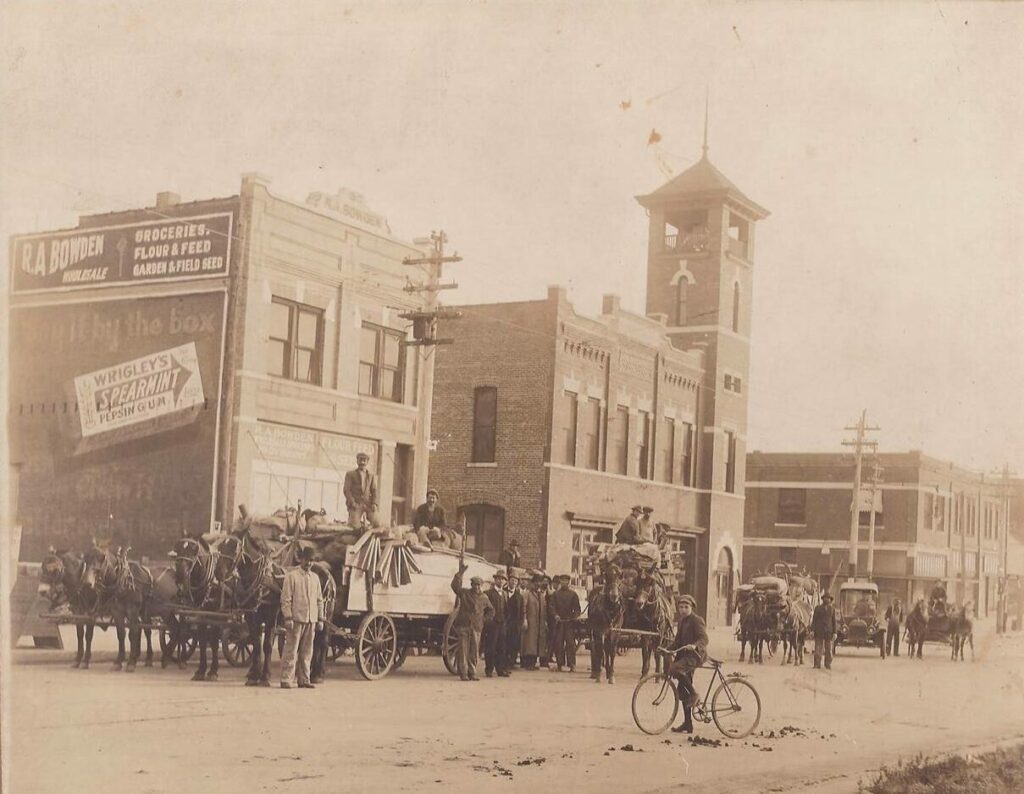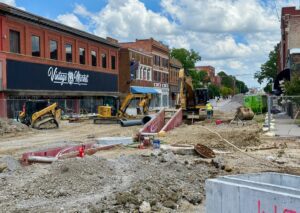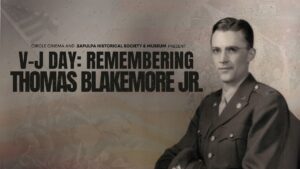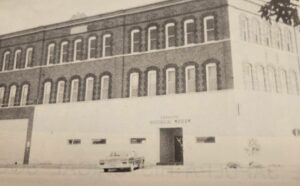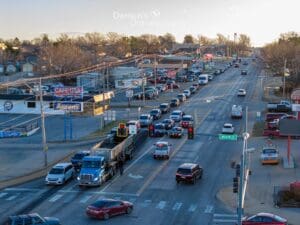Rachel Whitney, Curator,
Sapulpa Historical Museum
“No man is an island, entire of itself; every man is a piece of the continent, a part of the main…any man’s death diminishes me, because I am involved in mankind, and therefore never send to know for whom the bell tolls; it tolls for thee.”
This is a piece of poem from John Donne’s writing. “The meaning of ‘never send to know for whom the bell tolls’ is fairly straightforward. We should feel a sense of loss at every death, because it has taken something away from mankind. The other famous phrase ‘no man is an island’ has entered common usage because no individual can subsist alone.”
At funerals, a moment of silence, the ringing of a bell, three-volley salute, and even singing are often customs for remembrance and honoring those who had perished. Sapulpa, like many towns in Oklahoma, rang her bell one last time, for one of Oklahoma’s most cherished cowboys.
Sapulpa’s old City Hall, located on the northwest corner of Hobson and Park, stood tall and grand, and was built in March 1910. It was two stories filled with offices and departments. The entrance facing Hobson was used by the Fire Department. The entrance facing Park was used by the Police Department. Sleeping quarters for the Departments and a jail were, too, located in the building.
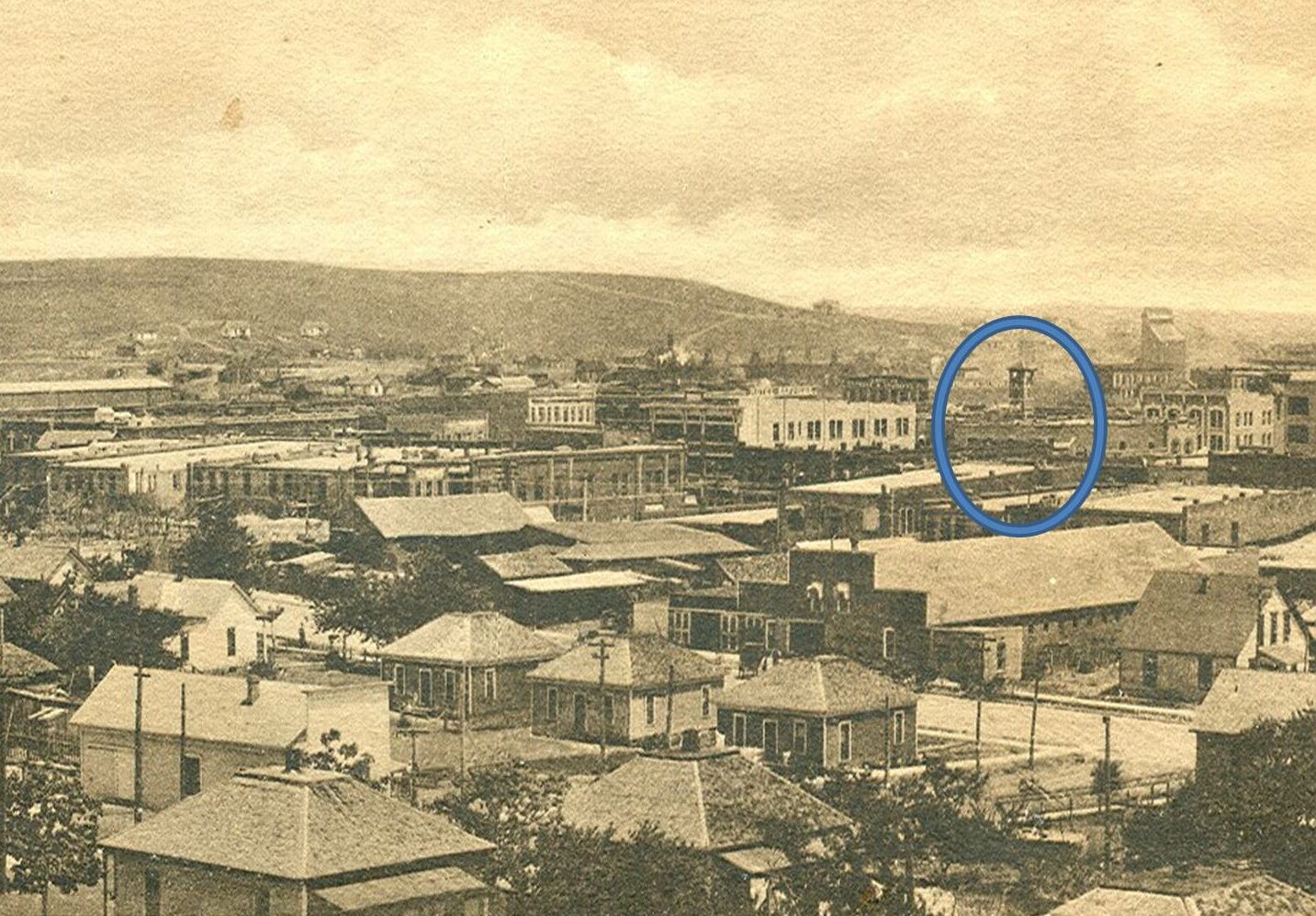
City Hall, also, had a bell tower, looking over the city of Sapulpa.
On August 15, 1935, breaking news rang out that Will Rogers and Wiley Post had been killed in a plane crash. “The pair were killed as their plane was nearing Point Parrow, Alaska, located at the extreme north point of Alaska on the shore of the Arctic Ocean.”

Sapulpans had numerous connections with the famed Rogers. One story Sapulpans tell is that it was Will Rogers, in Sapulpa, that first made the discovery of another famous cowboy, a singer, by the name Gene Autry, at Sapulpa’s depot. “Since the accident happened several Sapulpans expressed the feeling that they were uneasy toward Will Rogers making the trip with Post.
“Lew Wilder, Sheriff of Creek County, by marriage is a cousin to Will Rogers. He was shocked at the news. The feeling of all Oklahoma and the rest of the nation was amply evidenced almost at once this morning when the flash on the tragedy was received.”
Sapulpa was about lose another treasured icon. This week in Sapulpa history, the City Commissioners held a meeting discussing bond issues and the bell tower. “Following discussion of bonds, the discussion of the belfry on the City Hall in which was pointed out that when it rained, water leaked into the vault where city records were kept.”
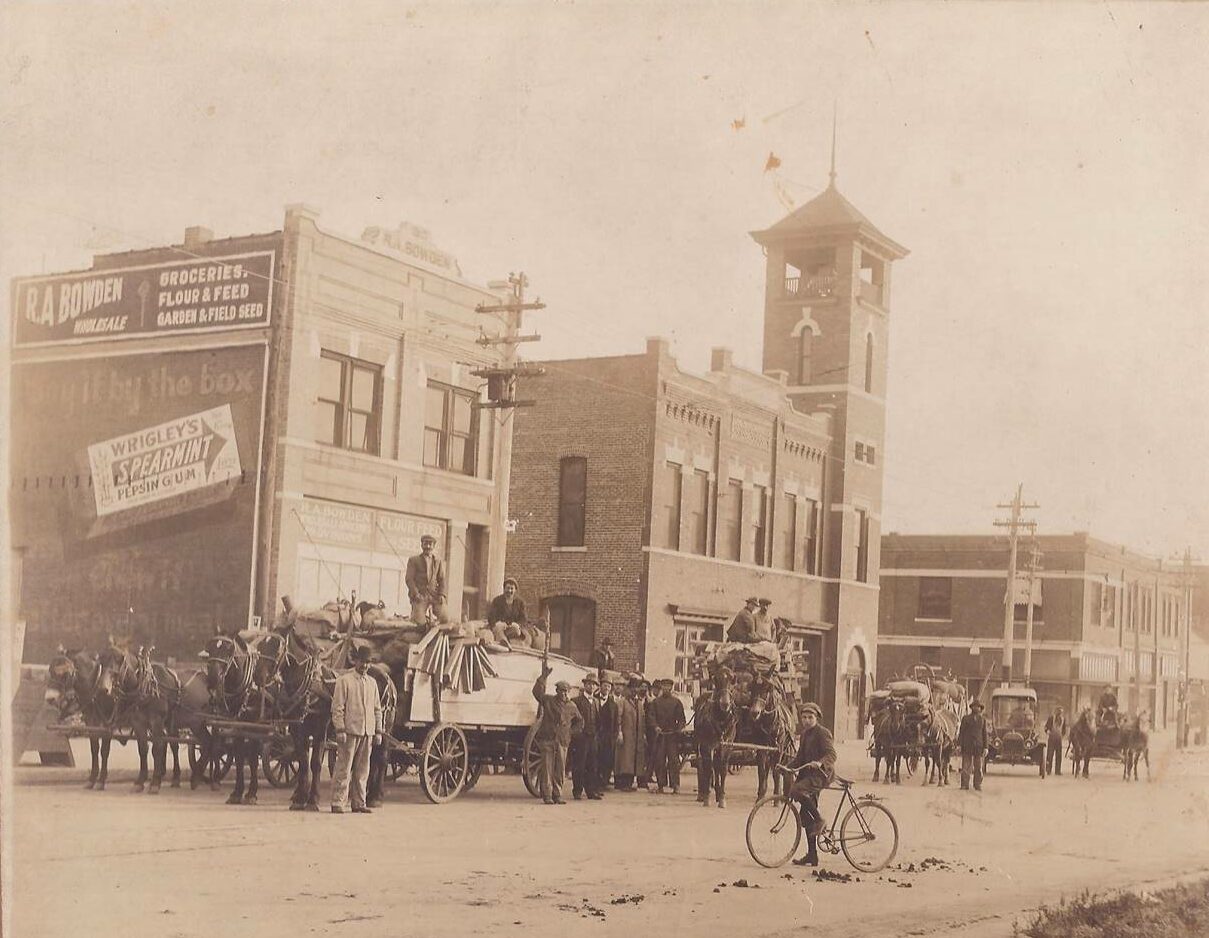
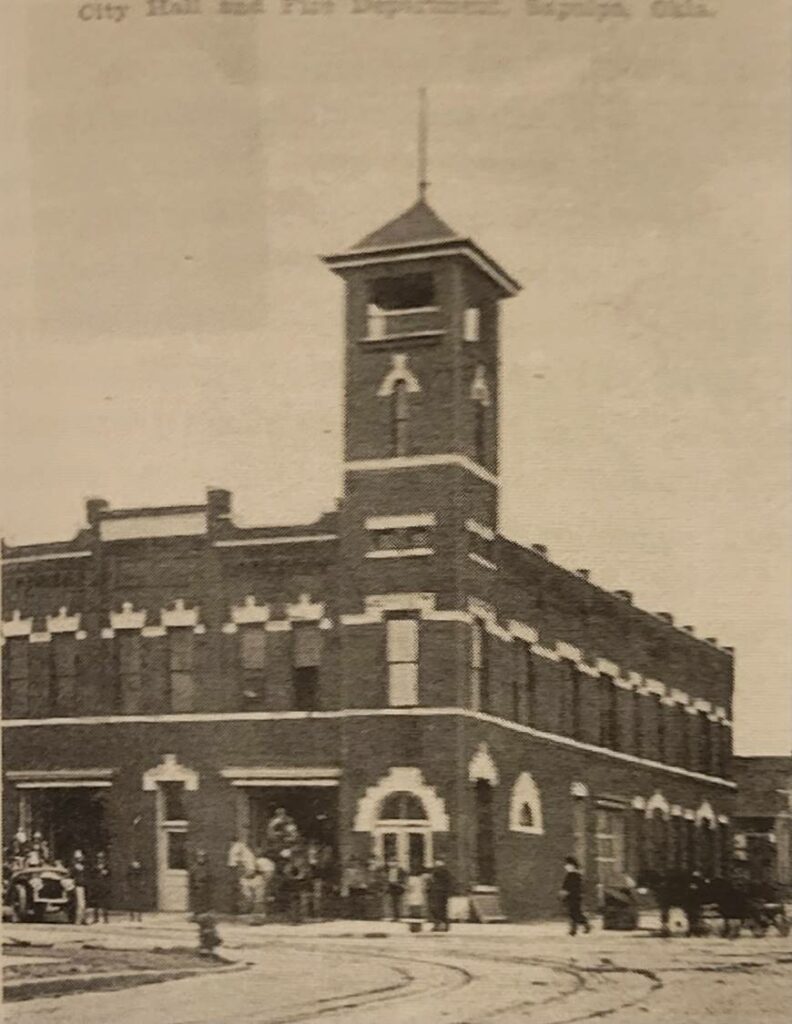
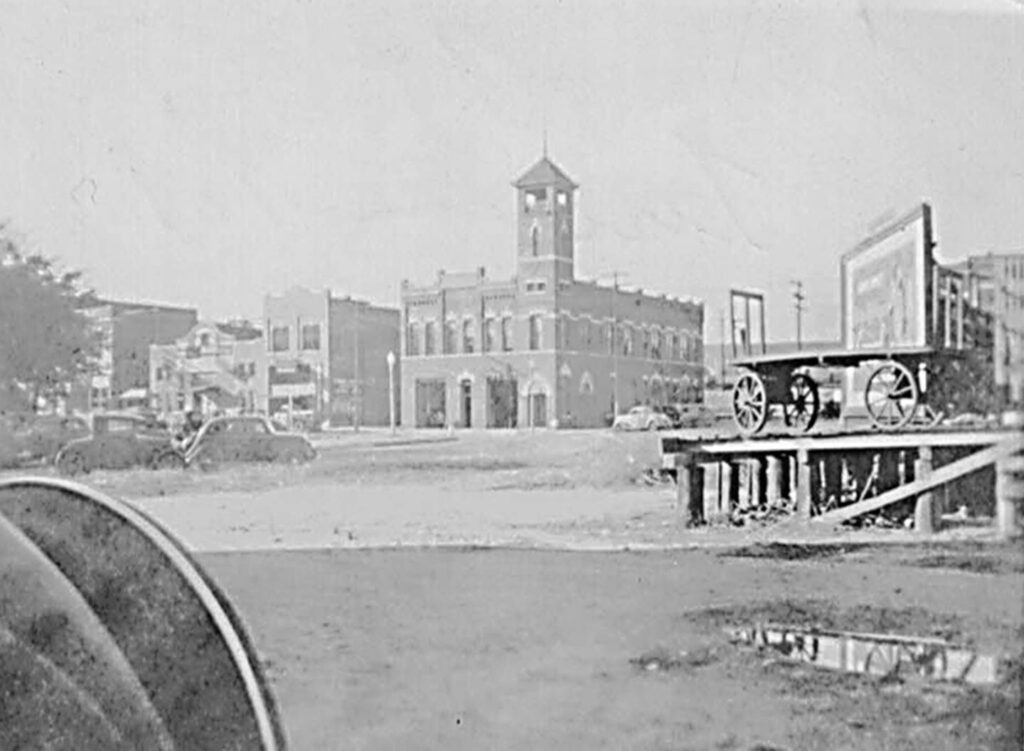
The part of the building was deemed unsafe after an inspection just a day prior.
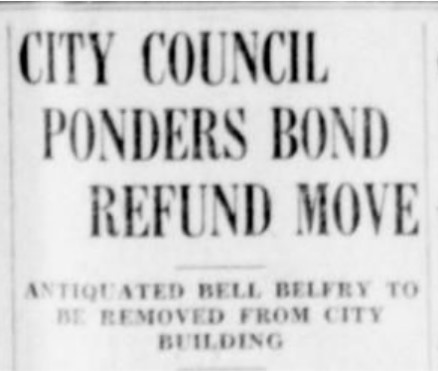
“A move is underway to raze the belfry on the City Hall.” The newspapers used many terms to describe the bell tower that had only been watching over the city for 25 years: the “antiquated belfry to be removed from city building,” and “the aged City Hall fire bell,” and lastly, “the ancient fire bell.”
The bell had only been used on a handful of occasions over its two and a half decades. “The ancient fire bell was used in the earlier days of Sapulpa history as a fire alarm and as a curfew. In 1919, the City Commissioners voted into existence the curfew ordinance which required all boys and girls under the age of 16 be off the streets by 10 o’clock at night.”

The Chief of Police rang the bell early for a five-minute warning. However, “the ordinance was unpopular” and went out of style shortly after. “The bell became more and more obsolete, being used by this time only for purposes of mourning services for prominent citizens who had died.”
This week in Sapulpa history, the bell had one last mission. It would ring one last time before being pulled out of the tower and have the tower torn down. Mayor Horn gave it its final duty in a proclamation:

“Whereas, the Almighty has seen it fit to take from us our famed, noble, respected, and useful citizens. Both are sons of Oklahoma, being men of high character and whose lives have given pride and joy to all Oklahomans and inspiration to all who are to follow. Now, therefore, I, Mayor F.M. Horn, hereby proclaim that Thursday, August 22, 1935, from 11:55 a.m. to 12:00 noon be, and the same is hereby set aside a period of commemoration at which time all are requested to join in extending praise and loving remembrance to Will Rogers and Wiley Post, at which time bells will toll as a token of respect to our two departed citizens who have been called from us and who in their lives reached the topmost pinnacle of fame bringing glory, love, and respect to them, their families, and to all Oklahomans.”
This week in Sapulpa history, the large bell—which weight at least 1500 pounds—rang for its last five minutes.

“The aged City Hall fire bell resounded tones only one more time before it was taken down from where it has hung in the tower of the City Hall for more than a score of years.” The Captain of the Fire Department, H.W. Nettle, rang the bell for the town one last time. “Citizens of Sapulpa paid their respects to the two departed men” as well as for the bell and its home.
The bell tower was removed from the building. The tower was torn down, brick by brick.
After being called old, ancient, and antiquated, Sapulpa responded with respect. “Sapulpa is losing a landmark with the removal of the old fire bell from the tower of the City Hall. The bell in the City Hall belfry might serve as the nucleous around which another significant memorial might grow. Such a move is chiefly a matter of civic pride and a determination to carry on the interesting traditions of a community that build and preserve its bits of history.”
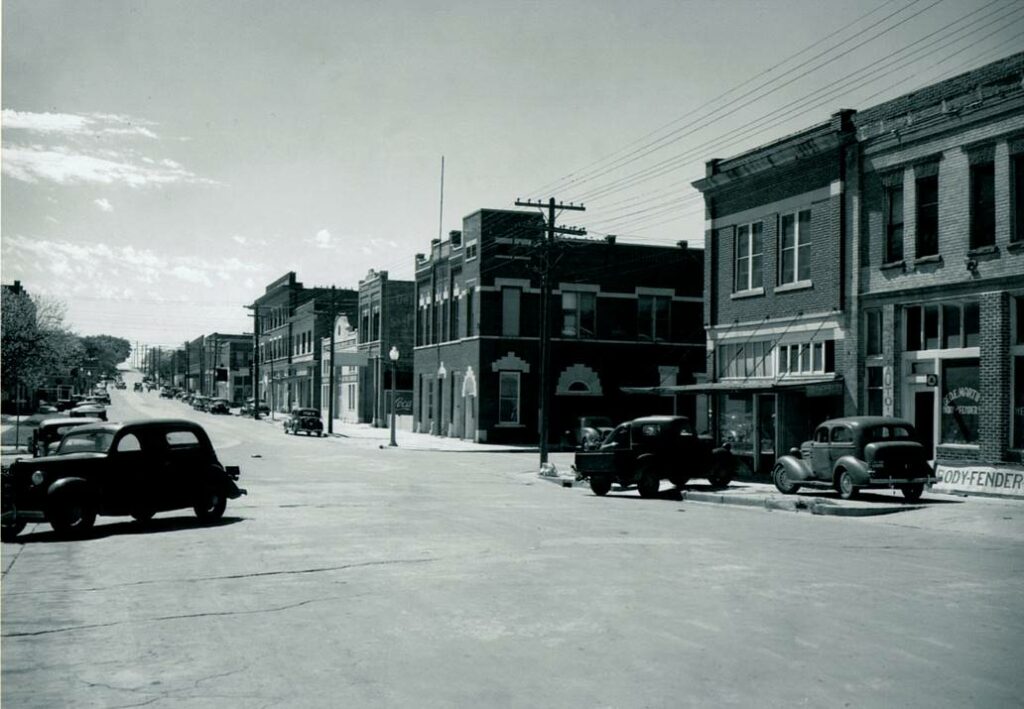
(Interesting Literature; Sapulpa Free Press, August 16, 1935, August 23, 1935; Sapulpa Herald, August 20, 1935, August 21, 1935, August 22, 1935, August 23, 1935)

